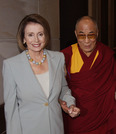
214 Results


Understand demographic measurements like fertility and mortality ratesDescribe a variety of demographic theories, such as Malthusian, cornucopian, zero population growth, and demographic transition theoriesBe familiar with current population trends and patternsUnderstand the difference between an internally displaced person, an asylum-seeker, and a refugee


Describe climate change and its importanceApply the concept of carrying capacity to environmental concernsUnderstand the challenges presented by pollution, garbage, e-waste, and toxic hazardsDiscuss real-world instances of environmental racism

Describe the process of urbanization in the United States and the growth of urban populations worldwideUnderstand the function of suburbs, exurbs, and concentric zonesDiscuss urbanization from various sociological perspectives

- Subject:
- Social and Behavioral Sciences
- Sociology
- Provider:
- Rice University
- Provider Set:
- OpenStax College



Explain different intergroup relations in terms of their relative levels of toleranceGive historical and/or contemporary examples of each type of intergroup relation


Compare and contrast the different experiences of various ethnic groups in the United StatesApply theories of intergroup relations, race, and ethnicity to different subordinate groups

Explain the difference between stereotypes, prejudice, discrimination, and racismIdentify different types of discriminationView racial tension through a sociological lens

Describe how major sociological perspectives view race and ethnicityIdentify examples of culture of prejudice

- Subject:
- Social and Behavioral Sciences
- Sociology
- Provider:
- Rice University
- Provider Set:
- OpenStax College

Give examples of religion as an agent of social changeDescribe current U.S. trends including megachurches and secularization

Discuss the historical view of religion from a sociological perspectiveUnderstand how the major sociological paradigms view religion

Explain the differences between various types of religious organizationsUnderstand classifications of religion, like animism, polytheism, monotheism, and atheismDescribe several major world religions


Describe different forms of collective behaviorDifferentiate between types of crowdsDiscuss emergent norm, value-added, and assembling perspective analyses of collective behavior
